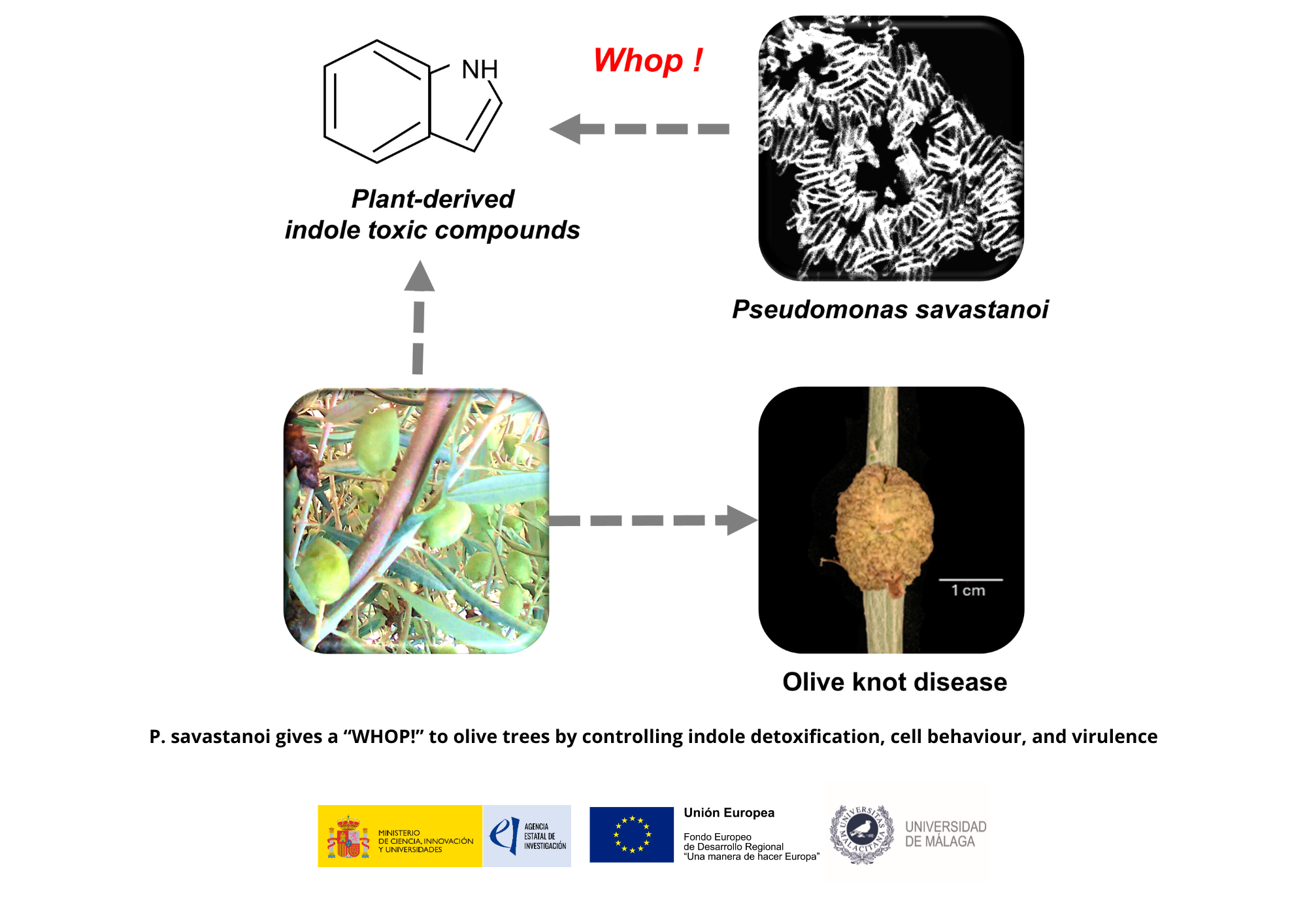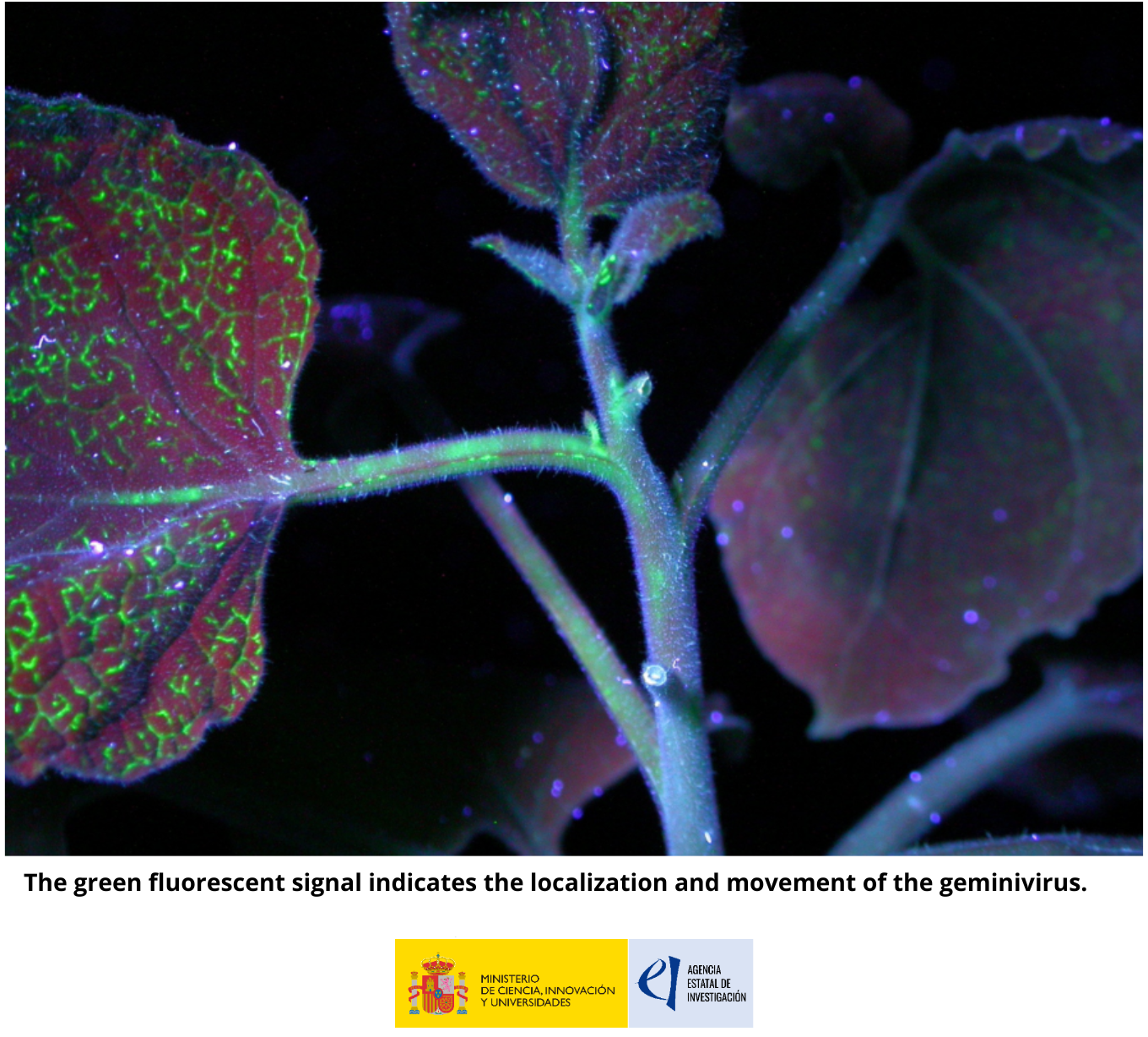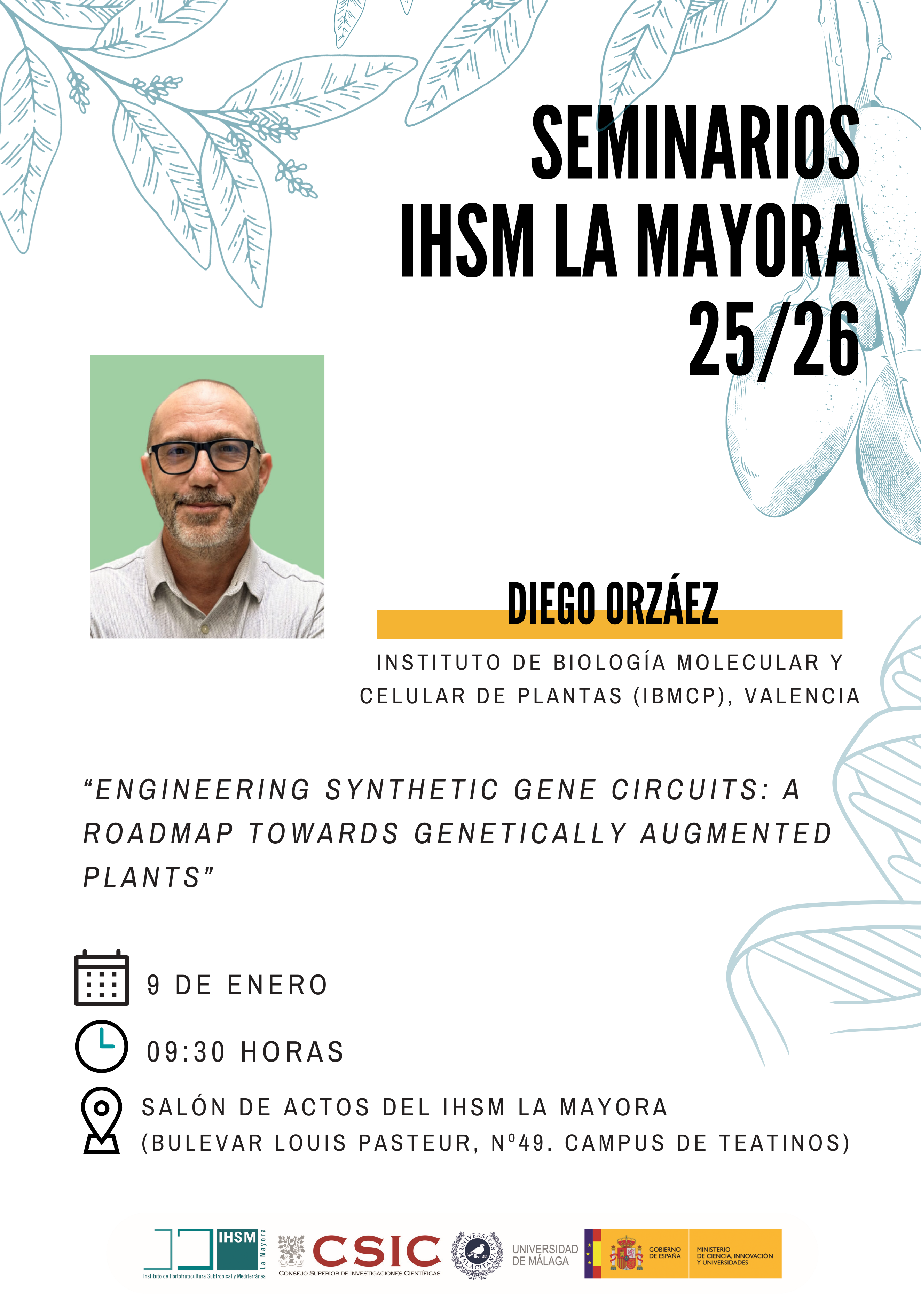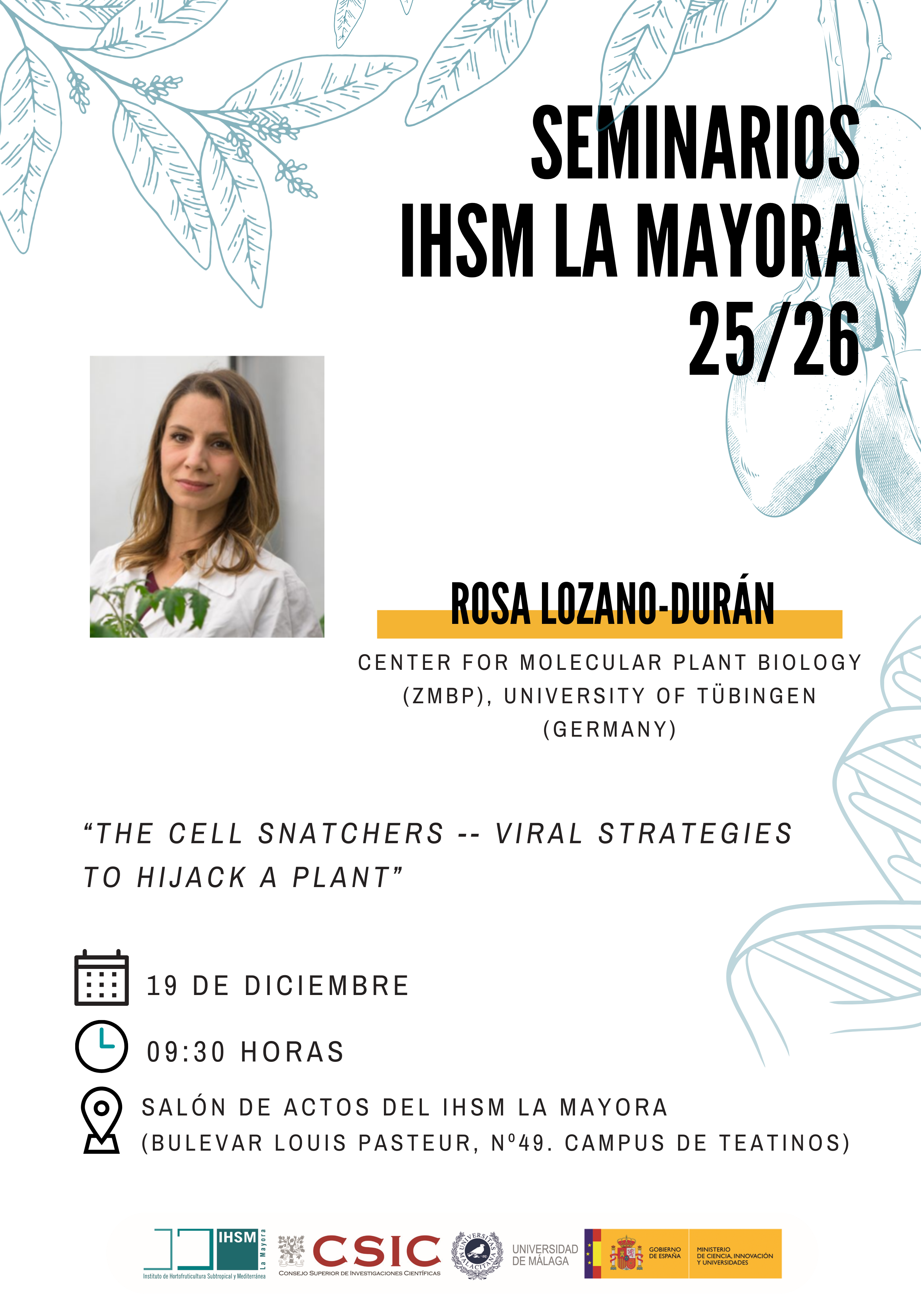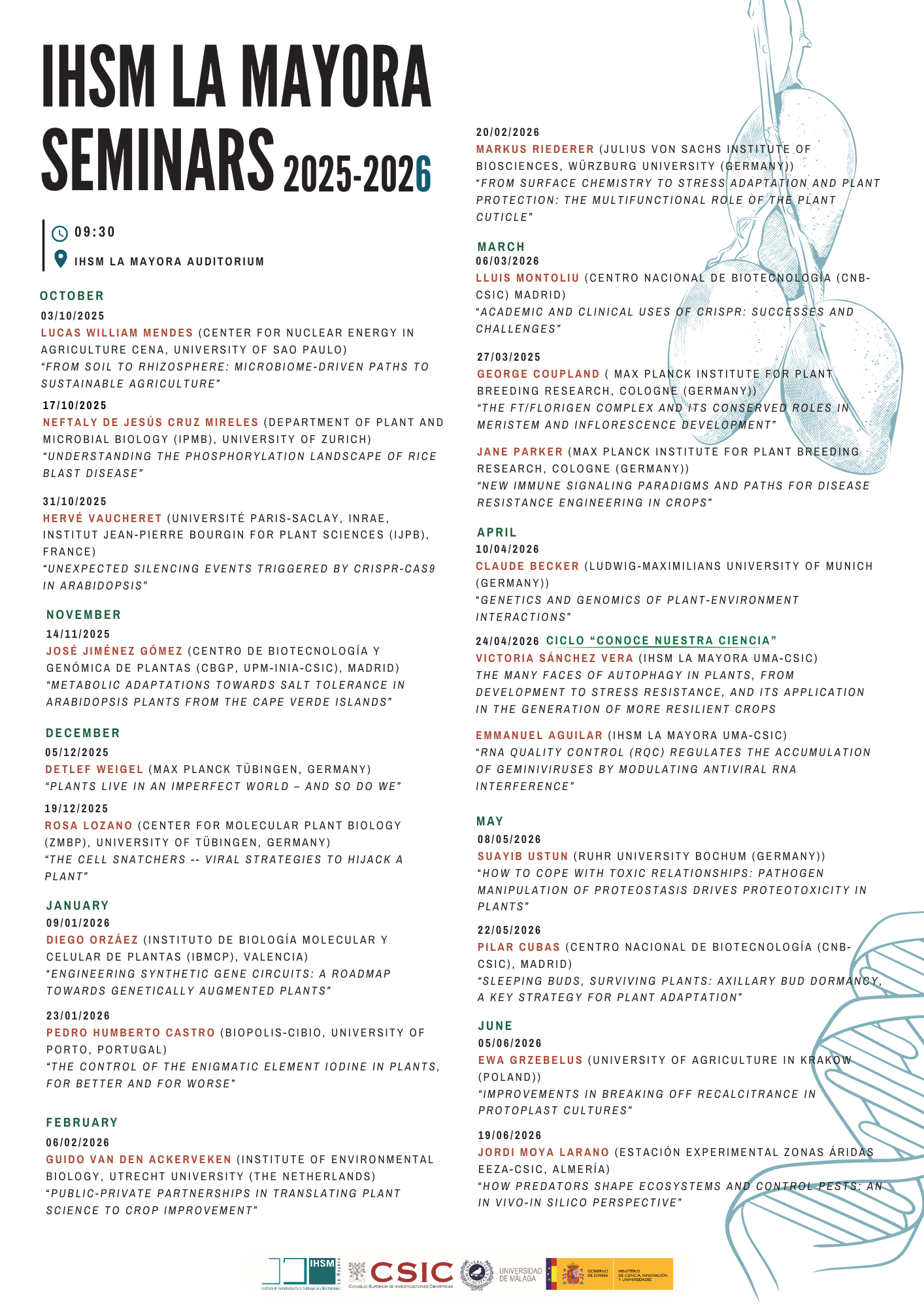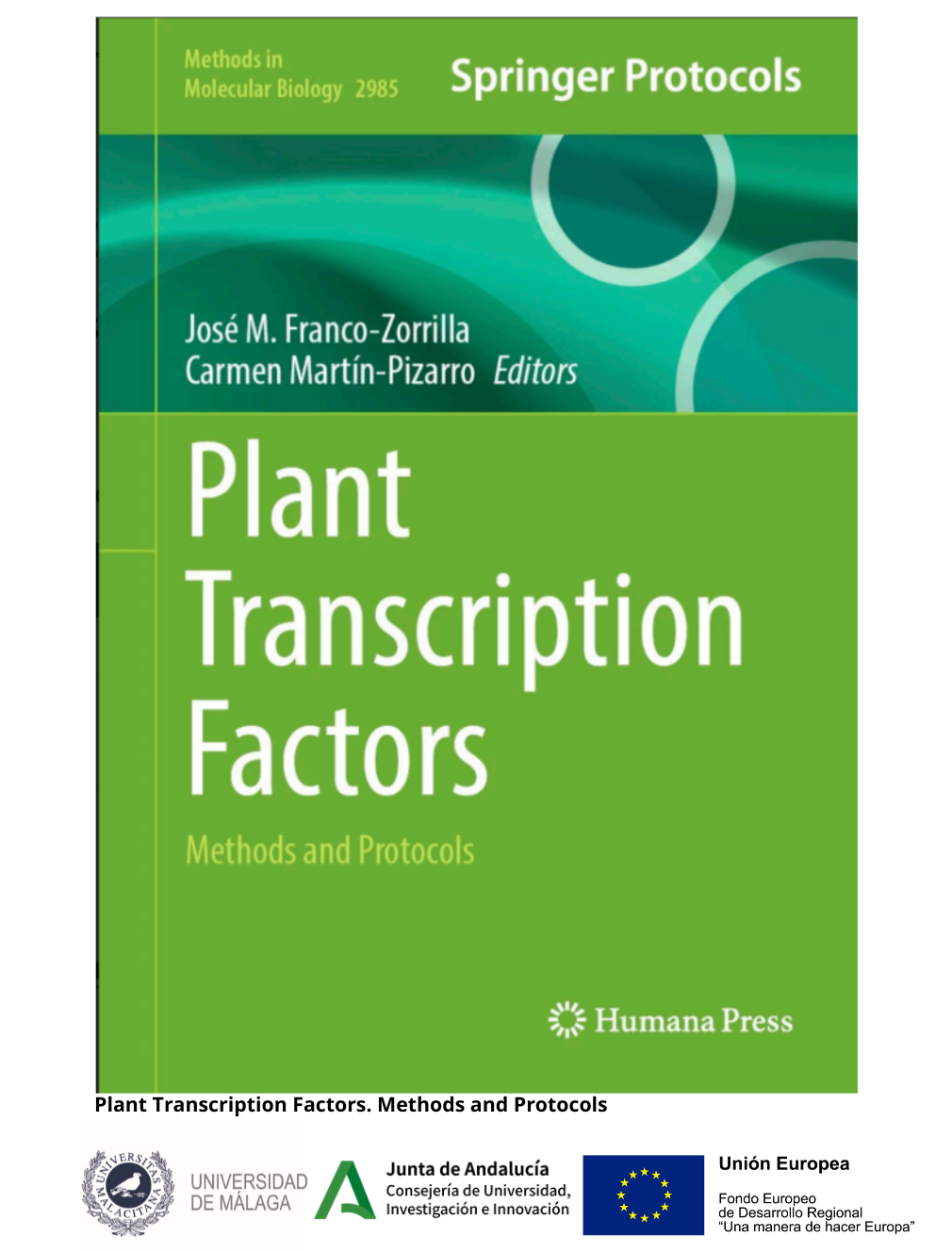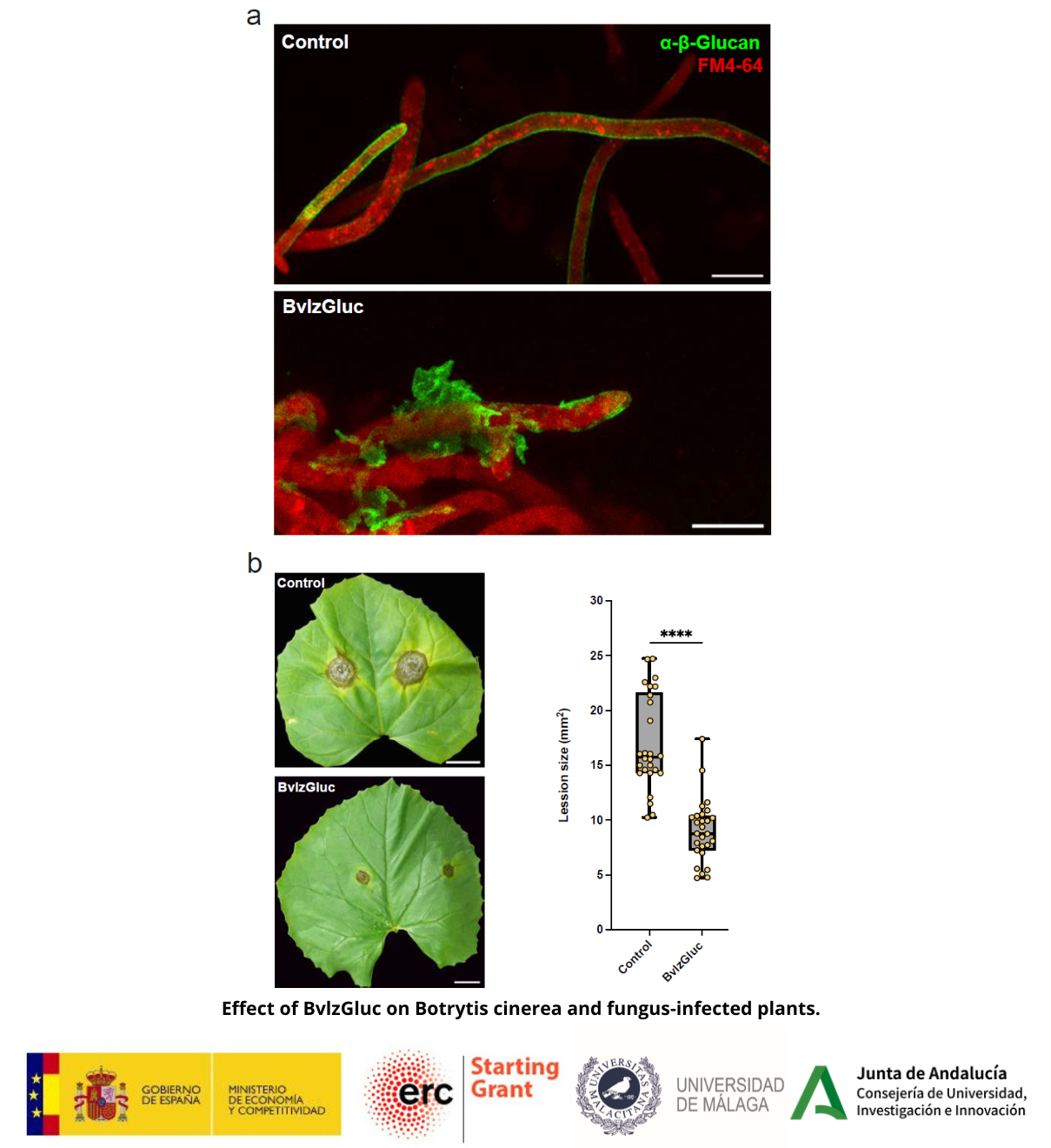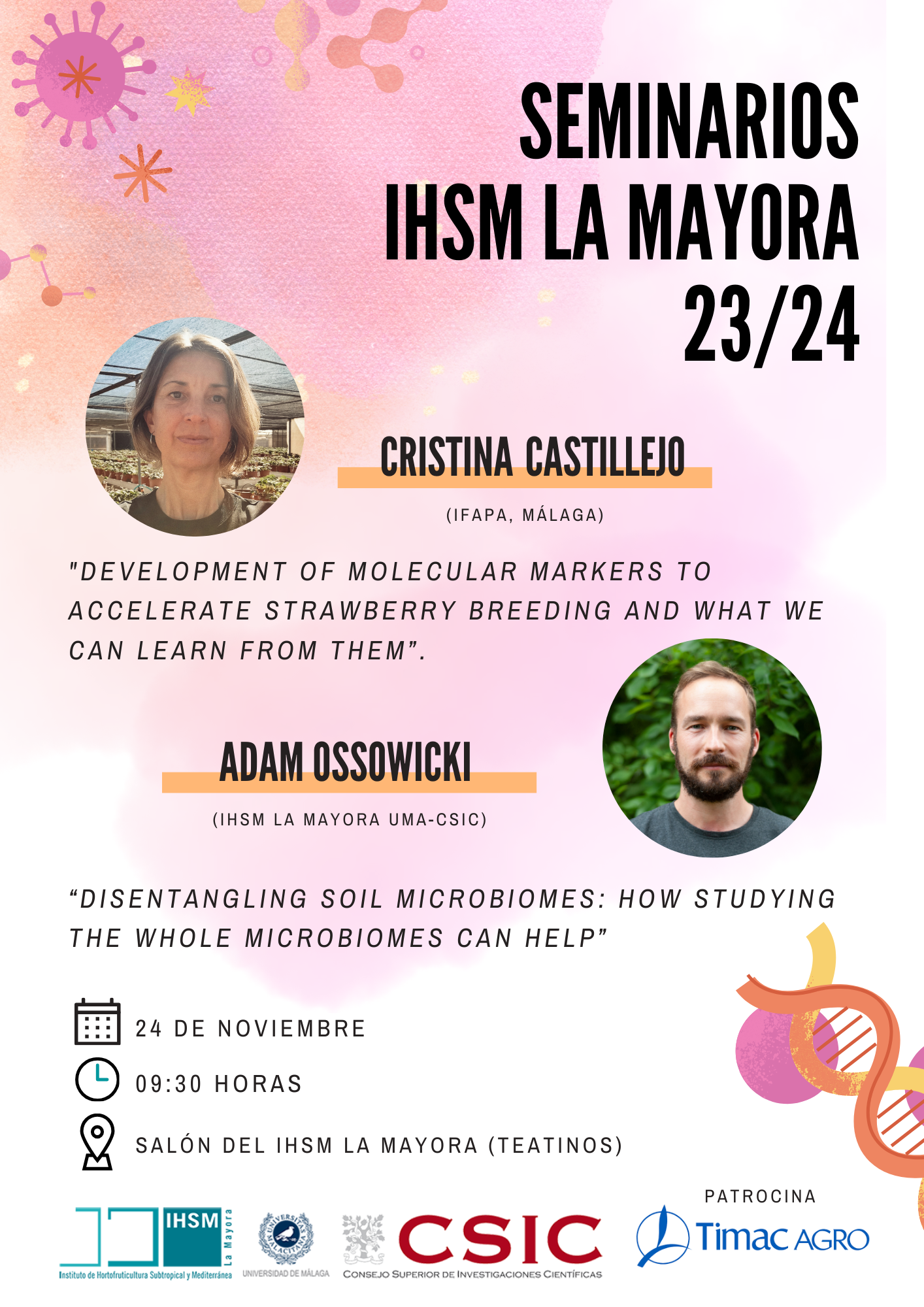
Seminarios IHSM La Mayora - Cristina Castillejo (IFAPA) y Adam Ossowicki (IHSM La Mayora)
“Development of molecular markers to accelerate strawberry breeding and what we can learn from them.” The main focus in our lab is the development of molecular markers that could facilitate marker-assisted breeding of strawberry. Targeted traits include those related with fruit quality such as flesh color, nutritional value, flavor and aroma or fruit size. Identification and validation of the underlying genes for those traits allow us a better understanding of the molecular control of those processes and the physiology of strawberry fruit ripening, in which phytohormones play essential roles. While climacteric fruit ripening is dominated by ethylene, in the non-climacteric strawberry, the initial development of the receptacle depends on auxin and subsequent ripening relies on abscisic acid (ABA). In this talk, the focus will be on the control of carotenoid accumulation in strawberry fruits, and the putative interplay with ABA biosynthesis. Additionally, GWAS analysis performed in our lab, points to an involvement of an auxin response factor (ARF) in the control of fruit size. We expect that the study of its action mechanism will deepen our understanding of the signaling cascade downstream of auxin perception during fruit ripening. Disentangling soil microbiomes: how studying the whole microbiomes can help sustainable agriculture The age of climate change brings new challenges to agriculture while the “old enemies” are still an undeniable thread. Nowadays, more than one third of crop yield is lost due to environmental stresses, such as drought, salinity, pests and diseases. To minimize the losses and to simultaneously reduce the environmental impact of current agricultural practices, future food production needs to evolve. The challenges of agriculture have increased the awareness of plant-associated microbiomes bearing a hidden untapped potential for crop productivity and resilience. Because of the complex diversity and dynamics of the plant microbiota, unravelling the mechanisms by which specific microbial consortia provide beneficial services to plants is a great challenge. So far, most of the effort is directed into isolation of specific microbial species and reconstitution of a beneficial phenotype, but there are other powerful tools to study microbiomes. Top-down approach offers advantages of accessing the space of unculturable microorganisms and maintaining interactions between them. In this presentation I would like to share some ideas and concepts considering the whole microbial community perturbation and manipulation with an example of a disease suppressive soil and introduce my recently started project ”microTRIAS: Microbiome training towards improving agricultural sustainability”.

